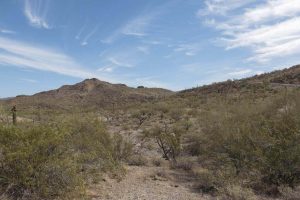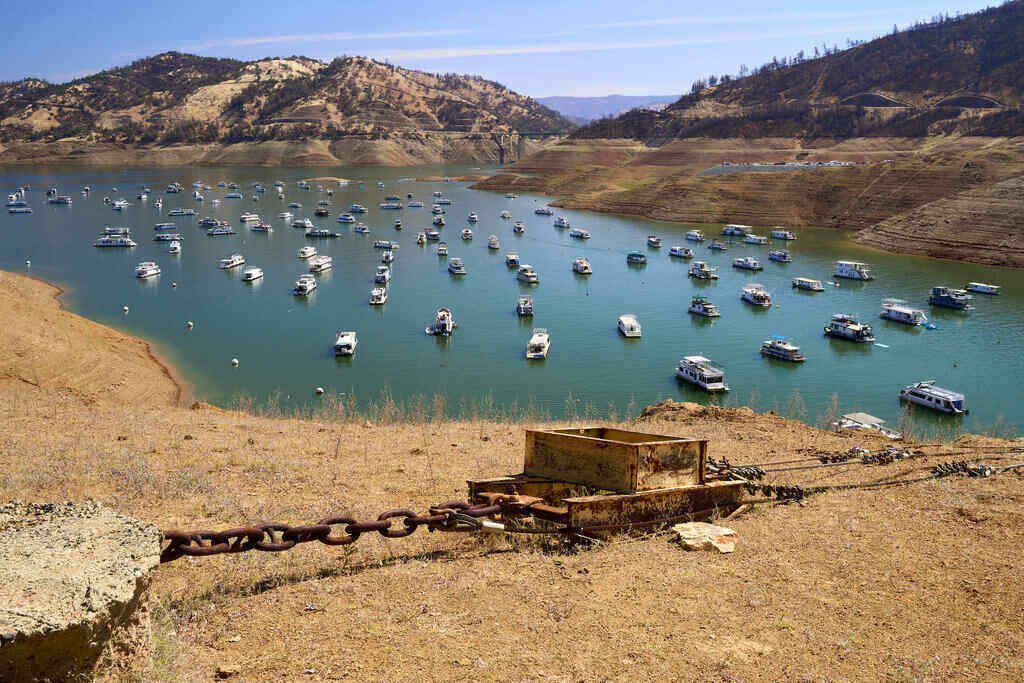|
Getting your Trinity Audio player ready...
|

The effects of the climate crisis are tangible: raging wildfires, melting glaciers, rising seawater, and rain and snowfall deficits. For example, Californian towns started to sink because the state’s severe drought depleted the rivers, lakes, reservoirs, and aquifers.
Some places in Corcoran, California, have sunk as much as 11.5 feet in the past 14 years. The town, situated in Joaquin Valley, is a farming community with a drought problem that is almost impossible to detect with the human eye. But NASA satellite imagery reveals that Corcoran is one of the fastest sinking areas in the United States, according to the United States Geological Survey (USGS). Scientists indicated NASA’s images showed some towns in Central Valley had sunk nearly a foot between October 2020 and September 2021.
The phenomenon’s technical term is land subsidence: The gradual downward vertical movement of the Earth’s surface happens when excessive amounts of water are pumped from deep underground, causing underlying sediments to collapse into the space that once flowed with water. Roads, bridges, and irrigation canals have cracked as the area compresses. For example, when NASA flew radar equipment over the California Aqueduct in 2014, they discovered one section sunk about 8 inches (20 centimeters) over four months.

However, this century-old problem is something California regulators have tried to slow, but due to the changing climate, they face a grueling battle, according to scientists. “Such sagging can leave canals carrying less water — an ‘ultimate irony,’ because they were built to [reduce] the demand for groundwater,” explains Professor of Hydrogeology and Hyrodeolgist Graham Fogg at UC Davis. Furthermore, rampant pumping compromises water quality since pollutants collect in the groundwater and the clay leaches arsenic.
California’s drought caused the state to pass legislation to protect its groundwater in 2014. Nonetheless, researchers believe that half of Central Valley’s aquifers are severely depleted, but they do not know the extent of the problem.
Globally, 17 countries face increasing threats from drought. To make up for less rain and snow, they drilled more wells. These regions house one-quarter of the world’s population, and their aquifers are “highly stressed,” according to the World Resources Institute. “Water and food supplies for billions of people are under threat.”
Written by Cathy Milne-Ware
Sources:
San Francisco Chronicle: California’s drought has caused entire towns to sink nearly a foot in just one year. This map shows where; by YoohYun Jung
The New York Times: The Central California Town That Keeps Sinking; by Lois Henry
Science: Deep Deficit: Droughts highlighted California’s unsustainable use of groundwater. Now, the state is trying to refill its aquifers. By Erik Stokstad
National Weather Service: Understand Drought and Know How to Respond
National Integrated Drought Information System: National Conditions June 1, 2022 – June 7, 2022
Featured and Top Image Courtesy of Frank Schulenburg’s Flickr Page – Creative Commons License
Inset Image Courtesy of Los Angeles District USACE’s Flickr Page – Creative Commons License



